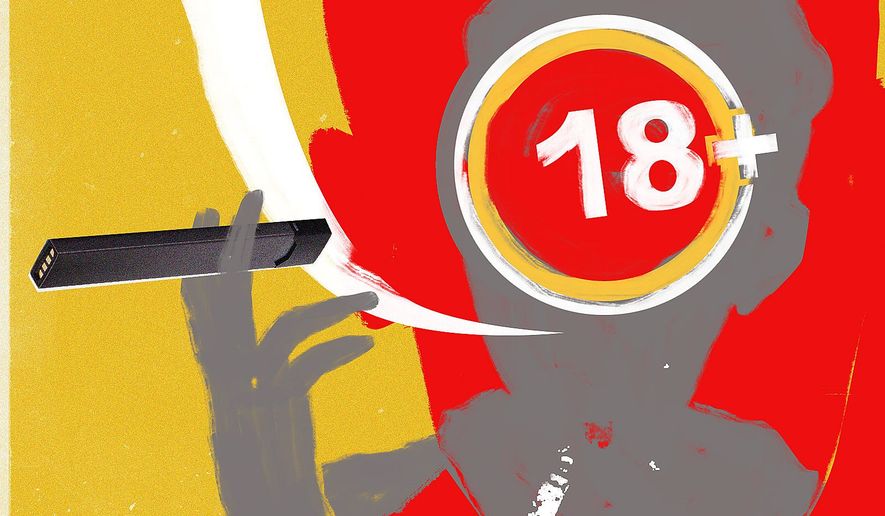OPINION:
Food and Drug Administration (FDA) Commissioner Scott Gottlieb recently announced new tobacco-control measures that were, within minutes, greeted with adulation by everyone except, of course, that handful of health practitioners with any sense about them.
In an effort to tackle “the disturbing trend of youth nicotine use,” Mr. Gottlieb and friends decided to limit, among other things, the sale of e-cigarettes. Should these limits be enacted, the products in question would be available only at vape and tobacco stores, or age-restricted sections of convenience stores.
The rationale this seemingly hysterical policy course correction appears to be that the uptick in teen e-cigarette use will lead, they think, to a new generation of combustible tobacco users. If this were demonstrably the case, then it might make sense to relegate e-cigarettes to the Larry Flynt aisle of the local five and dime.
However like many initiatives promulgated by the federal government, Mr. Gottlieb’s decision is based on bad logic. And bad logic, when applied as a panacea, can have unintended effects. After all, the goal ought to be to keep kids away from the most dangerous behavior — smoking.
Studies supporting the notion that kids who try vaping will dive head first into combustible use are critically flawed — they cannot control for kids who would end up smoking anyway and rarely acknowledge those who use e-cigarettes in the first place. In reality, vape use is highly concentrated in those who already smoke or have tried smoking.
Indeed, the National Academies of Science notes that associations between smoking and vaping do exist, but they are contradicted by population data citing opposing trends in e-cigarette and cigarette use among youth in recent years, and do not confirm person-level positive associations with vaping and smoking.
Within hours of the FDA’s announcement, partial data from the National Youth Tobacco Survey was released showing an uptick in e-cigarette use among adolescents, which is concerning. But the alarmist rhetoric stating that 27 percent of high school students have used an e-cigarette, and that 27 percent of “current users” have used for 20 days or more, could use a bit of context.
The first number represents experimentation. If you’ve had one puff of an e-cigarette in the last month you are considered a “current user.” Of course, this isn’t great — if the experiment works, you might do it again. But given that most e-cigarette use occurs among teens with a certain degree of privilege, these users are less likely to become smokers later in life. And shouldn’t combustible use worry us the most?
The good news is that smoking rates are still declining. But only as a national average; many groups still have alarmingly high rates of smoking — 45 percent of adults who didn’t finish high school smoke. That’s three times the national average. In comparison, only 4 percent of adults with a graduate degree or higher smoke. By many standards, that’s a non-smoking population.
A wiser approach — held as official policy by Public Health England (the U.K.’s equivalent to our CDC) — is to use, and even embrace, e-cigarettes as a tool for harm reduction. Estimated to be 95 percent safer than their combustible counterparts, e-cigarettes have quite literally saved the lives of traditional smokers who have been unable to shake an addiction to nicotine. Cut off easy access to e-cigarettes, and you vastly increase the chances a former smoker, in a moment of weakness, resorts to old habits.
Is the risk of children seeing e-cigarettes for sale at their local 7-11 dangerous enough to deprive adult smokers of a life-saving alternative? There are already too many obstacles to navigate for former smokers to access them freely — high prices, misinformation about health risks — so keeping some of the things that people like about them (like flavor choice) should be at the forefront of the FDA’s new tobacco plan. This means having them available where smokers are most likely to buy them — the same places they used to buy their cigarettes.
• Carrie Wade is harm reduction policy director,and David Bahr is communications director, both with the R Street Institute.




Please read our comment policy before commenting.